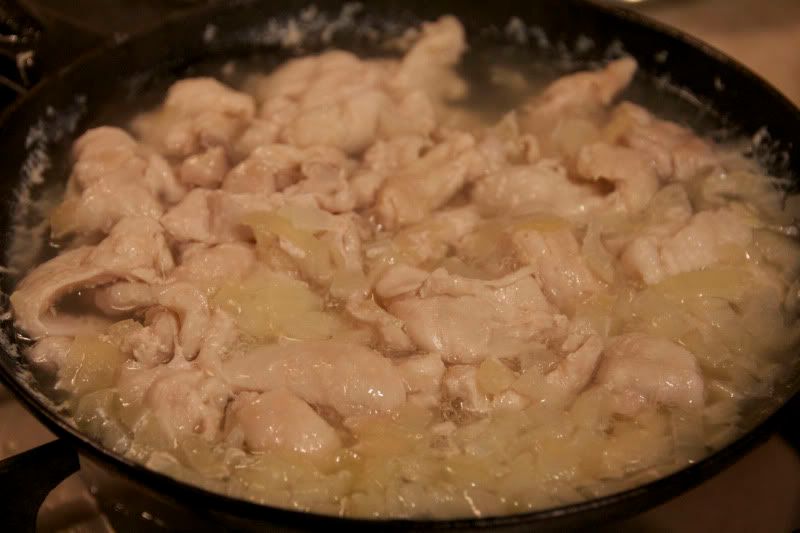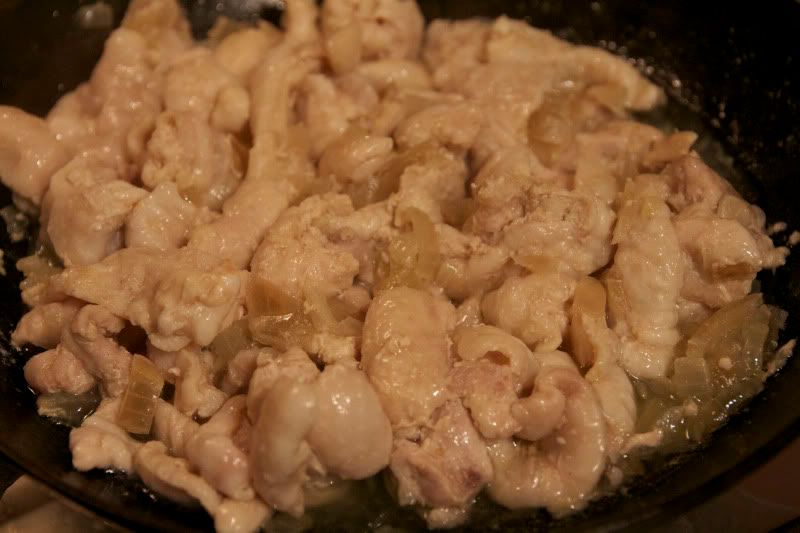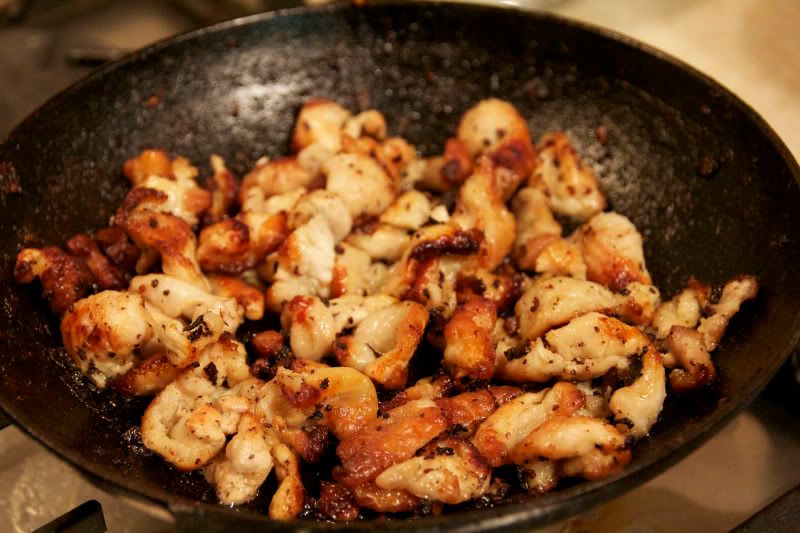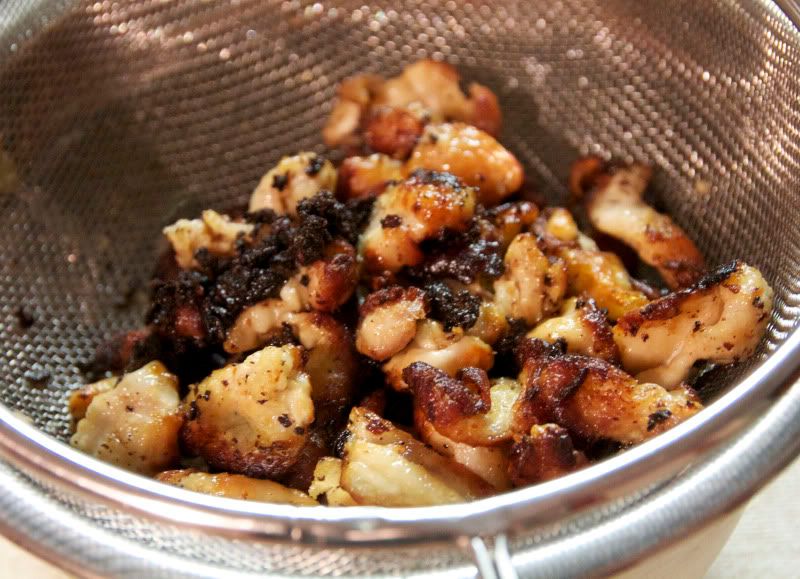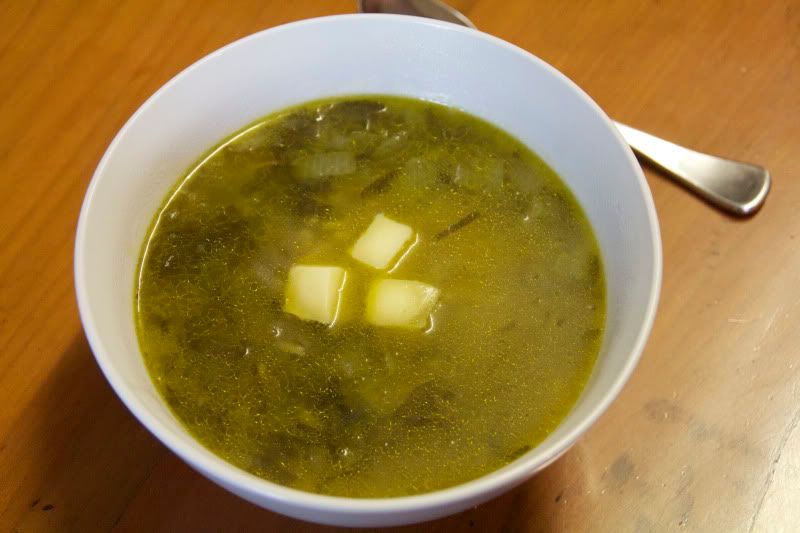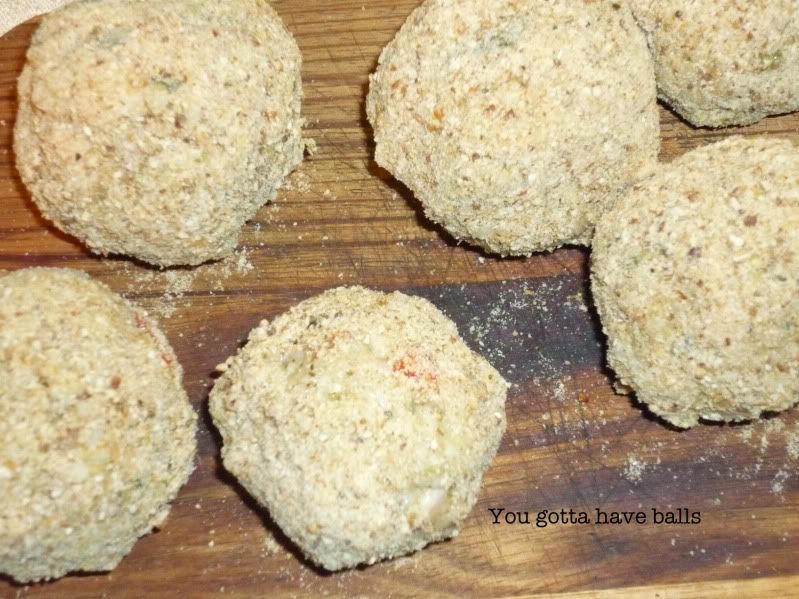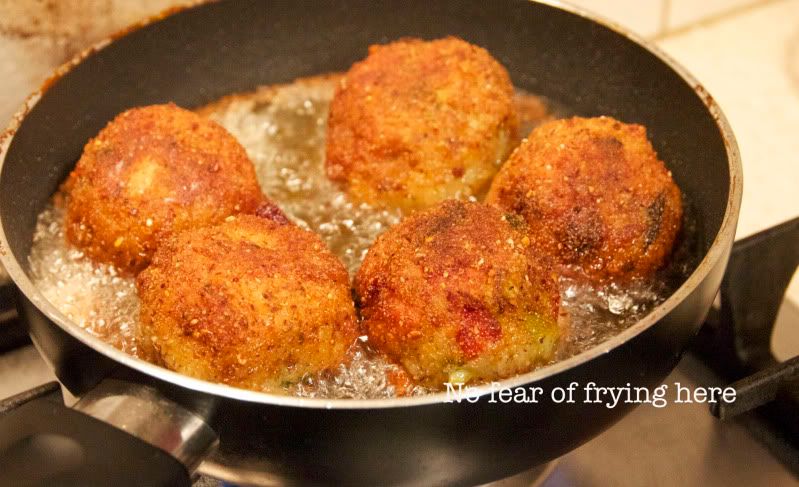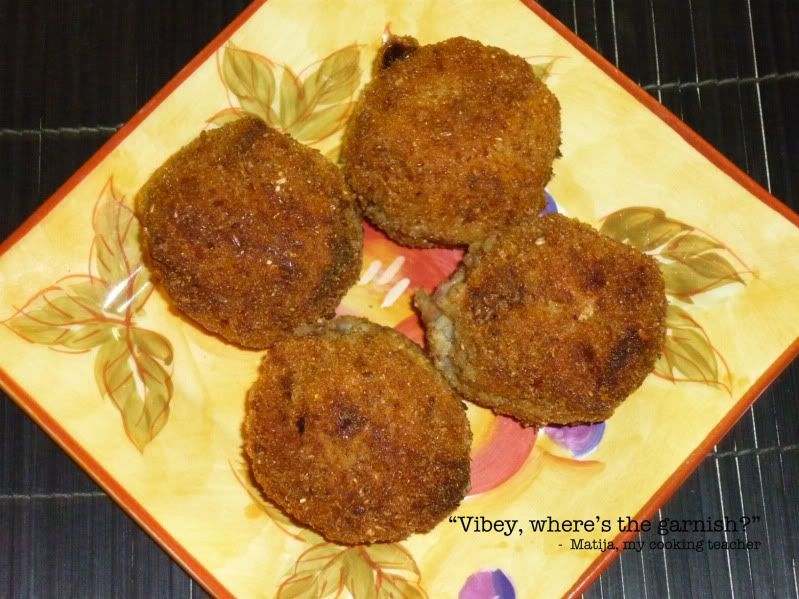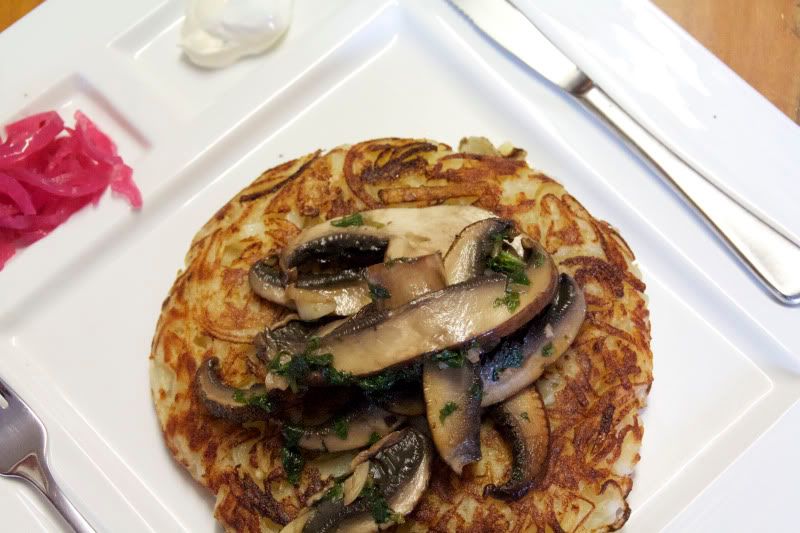 |
My Birthday Lunch for One, featuring potato pancake cooked in chicken fat, garlic Portobello mushrooms, and my daughter's pickled red onions.
Yumbo McGillicutty! |
If you’re inclined to guilt, you can’t win with chicken skin and trimmed fat. You’re either going to feel guilty about throwing it away, or guilty about eating it. But if you’re both adult-minded and care about food, common sense will tell you that you can include it in a balanced diet without fear of heart attacks or exploding gall bladders, and also make absolutely delicious, lip-smacking dishes with a flavour that, let’s face it, vegetable oil can’t replicate.
Despite the first title of the blog, it’s not just the Jewish that prize chicken fat. The cuisines that use chicken fat are many, particularly in cultures where every bit of the animal is used. Chinese cooks, for example, skim the fat off chicken stock to use later on in stir-fries. The French appear not to have cottoned on to chicken fat, but that’s because they’ve had geese and ducks to fall back on, so to speak. Same principle. But while many of us will rhapsodise over potatoes roasted in goose fat, we’ve forgotten that the humble chicken can provide us with similar results, and at a fraction of the price, without horrible additives.
Rendering your own chicken fat is dead easy and will give you two things to use: the fat (schmaltz) and the cracklings (grieben). The grieben, as the late Laurie Colwin said in one of my favourite books, Home Cooking, “must be terrible for you because they are so extremely delicious”. Grieben are a true delicacy, and any that you don’t swipe straight out of the pan elevate sautéed green vegetables into the very stratosphere of yumminess.
And then there’s the fat. Yes, it’s saturated. But my adult mind assumes that you’re not going to eat this stuff every day. Furthermore, Laurie Colwin’s trick is a beauty:
“… if you clutch your breast at the thought of all that saturation, a combination of chicken fat and vegetable oil works perfectly. You can also kid yourself that while the chicken fat is coating your arteries, the polyunsaturates in the vegetable oil are cleaning them out.”
It’s what I did for My Birthday Lunch, above. Chicken fat for flavour and crunch, and vegetable oil to reduce the damage.
Chicken fat can be used like any fat: to shorten a dough or pastry (which will make it rather fine), and of course, to sauté and fry. Like all animal fats, it adds loads of flavour, and that’s a bonus, because it means that you don’t need to use much to get the benefits.
So here is how to render your own chicken fat and also get that great by-product, grieben.
You can render fat either from chicken skin or from other parts of the chook; the area around the bum usually has a substantial fat deposit. Sigh... ain't that the truth! I have here the skin from nine chicken breasts. Now - it's not worth embarking on this process without a goodly amount of trimmings, but you may not have the opportunity to work with chickens in bulk, so I would suggest that you drop all your skins and trimmed fat into a ziploc baggie in the freezer, and just keep adding to it until you have enough.
Place the chopped or julienned chook bits and a finely chopped onion in a frying pan with just enough water to cover. I'm using this small cast iron pan which I cannot throw away despite it long ago having lost its handle. I've had it 25 years and it's just the thing for this kind of thing. Put the lid on, and cook over medium heat for about ten minutes. This will make the fat begin to render out gently, which will give you the greatest volume.
Remove the lid, and allow to simmer. You'll be wanting this liquid to evaporate. How long? It takes as long as it takes.
Now is the time to listen. As soon as you begin to hear sizzling, your first batch of fat is ready. Strain solids in a fine mesh sieve over a bowl. This fat is, according to cooks who know their schmaltz, the finest and most delicate, and good enough to eat on bread if you're bent that way. You can keep this fat separate from the subsequent batch, but I didn't. I didn't think my palate or the palates of the people I cook for would be able to tell the difference.
Return the solids to the pan and increase the heat a bit. Cook steadily, stirring often, until the solids are golden and crunchy. Now is the time to practice self restraint, because you'll begin to have fantasies of salting them and taking them to the living room to munch on while you watch TV.
Once again, strain solids in a fine mesh sieve over a bowl. Refrigerate both chicken fat and cracklings, tightly covered. The cracklings will keep for a few days, and the fat will keep for 3-4 weeks in the 'fridge. You can also, of course, freeze both.
Grieben are brilliant added to just about any vegetable you care to sauté or roast. This broccoli was scarfed down, and I had to fight to have leftovers for my lunch the next day.
Chicken fat works like any fat, but my favourite use, hands down, is for frying potatoes. They crunch up and have incomparable flavour. I made this very immoderate potato pancake for my Birthday Lunch for One. To make it, I used chicken fat and vegetable oil, half and half, and silently blessed Laurie Colwin as I ate. She did, after all, say:
"It is silly to pretend that potato pancakes are dietetic or that they are good for you. If you are going to enjoy them, approach them as a rare delicacy, throw caution to the wind and have a good time."








